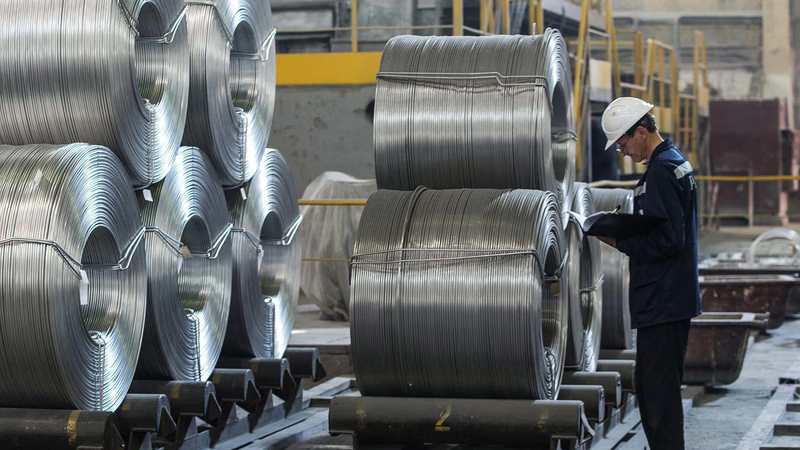
How does the aluminum industry shape trade and supply chains in the Middle East?
Aluminum, known for its versatility, lightweight nature, and corrosion resistance, has emerged as one of the most widely used metals after iron. In the Middle East, aluminum plays a key role in trade and industrialization, with West Asia serving as a vital hub for its production, export, and import. The aluminum industry in the region is supported by robust supply chain solutions, verified exporters and importers, and growing demand from various sectors such as construction, transportation, and packaging. West Asia’s aluminum industry thrives due to its access to abundant raw materials like bauxite and cost-effective energy resources. Aluminum products in the market include ingots, slabs, wires, and foils, each catering to distinct industries. For instance, aluminum foil finds widespread applications in packaging and insulation, while ribbed aluminum foil is highly valued in architectural design. Aluminum ingots, classified by alloy series such as 1000, 3000, and 5000, serve as a benchmark in pricing and application due to their varied properties. Factors influencing aluminum prices include global demand, energy costs, and regional trade policies.
Platforms focusing on commodity trade in the Middle East, such as Aritral, enable seamless connections between verified buyers and suppliers, fostering transparency and efficient transactions. Moreover, the aluminum industry dovetails with markets for other metals like copper, zinc, and steel, reflecting the interconnected nature of the region’s metallurgy sector. The future of aluminum in the Middle East is promising, driven by increasing urbanization, infrastructure projects, and its sustainability as a recyclable material. By leveraging market insights and B2B platforms, businesses can capitalize on the growing demand for aluminum and its derivatives, ensuring their foothold in the competitive West Asian market.
-
 Mohammad Javad Baqeri 3 months ago
Mohammad Javad Baqeri 3 months ago Iran
Aluminum, iron and steel, pickles, dried fruits and groceries, saffron and spices, metal waste, gold, tar, dairy products, jam and honey, copper, silv
Iran
Aluminum, iron and steel, pickles, dried fruits and groceries, saffron and spices, metal waste, gold, tar, dairy products, jam and honey, copper, silv
I\m directly in contact with all those suppliers from Iran`Details
-
 Almothana Almohammad 2 months ago
Almothana Almohammad 2 months ago United Arab Emirates
Raw Copper 999. 9
United Arab Emirates
Raw Copper 999. 9
Raw Copper 999. 9 in the UAE +971506377372Details
-
 شمش آهن و میلگرد 2 months ago
شمش آهن و میلگرد 2 months ago Iran
Export of iron billets and rebar and aluminum and urea and sulfur and cement
Iran
Export of iron billets and rebar and aluminum and urea and sulfur and cement
We at the export and import trade office are capable of supplying iron billets and rebar as well as aluminum and copper billets, and also supplying ce...Details
-
 Aliakbar Ameri 2 months ago
Aliakbar Ameri 2 months ago United Arab Emirates
Aluminium, copper
United Arab Emirates
Aluminium, copper
We are able to find customers for aluminum and copper in the worldDetails
-

 Saudi Arabia
Mualim Alminyum Tarkeeb wa Siyanat Mataabikh fi Sharurah
Saudi Arabia
Mualim Alminyum Tarkeeb wa Siyanat Mataabikh fi Sharurah
Aluminum installer and kitchen maintenance in SharurahDetails
-
 Ahjar Karima Wa Niyazk 2 months ago
Ahjar Karima Wa Niyazk 2 months ago United Arab Emirates
Stones and Meteorites
United Arab Emirates
Stones and Meteorites
Precious and semi-precious stones, rare and common, meteorites, and volcanic rocksDetails
-
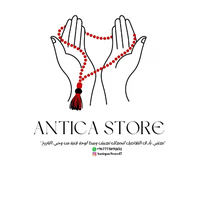 Ali Abdul Karim 6 months ago
Ali Abdul Karim 6 months ago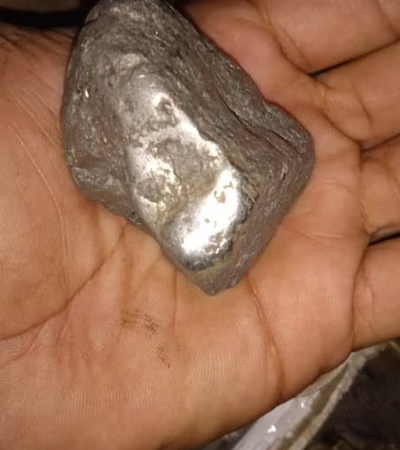 Yemen
Platinum
Yemen
Platinum
Pure platinum stone with its certificateDetails
-
 Veronica 6 months ago
Veronica 6 months ago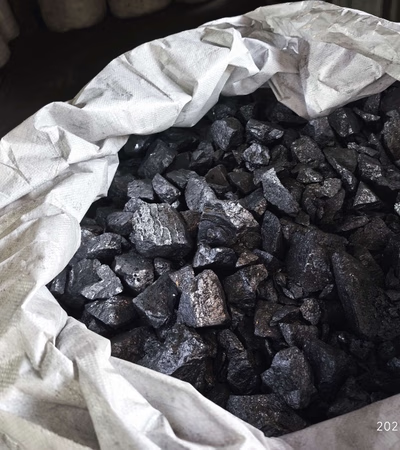 China
silicon metal
China
silicon metal
We can supply Silicon metal 553,441,3303,2202 and so on. Silicon metal products with low phosphorous and low titanium can also be supplied.Details
-
 Jolfa Tejarat Rahim Aras 2 months ago
Jolfa Tejarat Rahim Aras 2 months ago Iran
Various Types of Building Materials and Dry Goods
Iran
Various Types of Building Materials and Dry Goods
Exporting various types of steel with the shortest loading time and timely delivery at the lowest pricesDetails
-
 Feysal Mohammad 7 months ago
Feysal Mohammad 7 months ago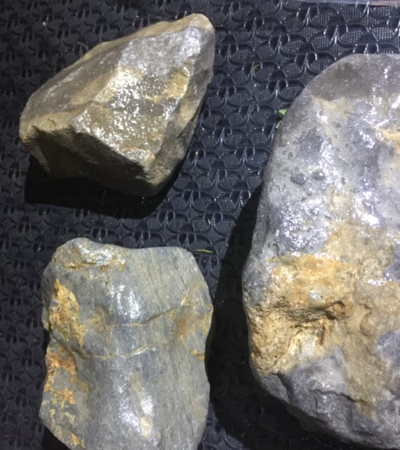 Ethiopia
Meteorite seller
Ethiopia
Meteorite seller
MeteoriteDetails
-
 Altinhat Diş Ti̇caret 2 months ago
Altinhat Diş Ti̇caret 2 months ago Turkey
LEADING SUPPLY COMPANY IN THE CONSTRUCTION AND FOOD SECTOR
Turkey
LEADING SUPPLY COMPANY IN THE CONSTRUCTION AND FOOD SECTOR
CALL US FOR INFORMATION ABOUT QUALITY PRODUCTS AND PRICESDetails
-
 Elegance Services 7 months ago
Elegance Services 7 months ago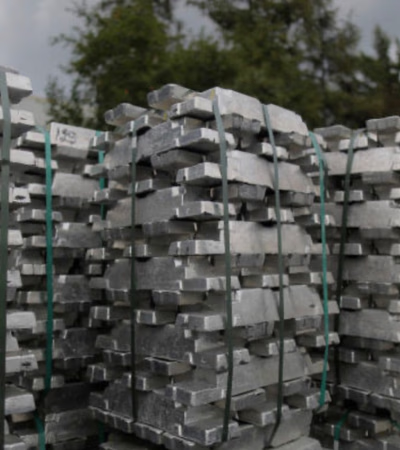 Nigeria
Aluminum ingots 99.97%
Nigeria
Aluminum ingots 99.97%
Good day Sir/Ma \nPlease we need a very genuine seller of Aluminum ingots 99.97%\n\nQuantity is 10,000 MT monthly \nCountry is 12 months \nDestination...Details
-
 Gulha Trading Import & Export 2 months ago
Gulha Trading Import & Export 2 months ago Qatar
Gold
Qatar
Gold
Gold Trading From Nairobi Kenya \nTotal - 800 KGSDetails
-
 Kayraft Ic Ve Dis Ticaret Limited Sirketi 2 months ago
Kayraft Ic Ve Dis Ticaret Limited Sirketi 2 months ago Turkey
Metal
Turkey
Metal
Aluminum ingot, iron ingot. High purityDetails
-
 William Liang Geto New Materials 2 months ago
William Liang Geto New Materials 2 months ago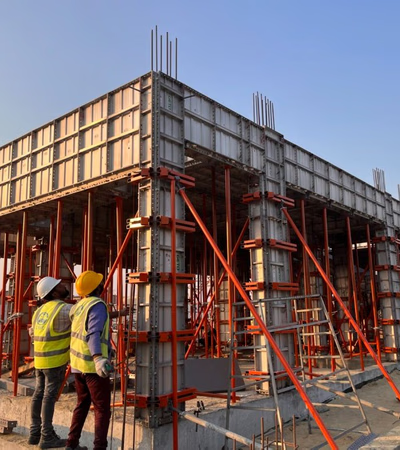 China
Aluminum formwork
China
Aluminum formwork
The formwork made of aluminum for building, mainly used for concrete pouring, has the advantages of good quality, high efficiency, environmental prote...Details
-
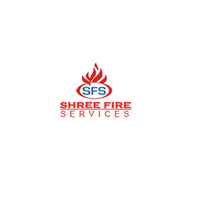 Shree Fire Services 2 months ago
Shree Fire Services 2 months ago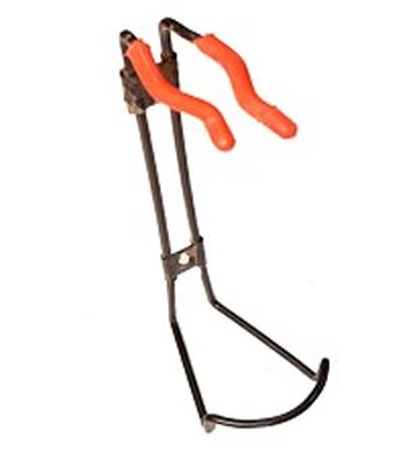 India
Shree Fire Services
India
Shree Fire Services
Shree Fire Services constitute the business in 2008 and is an eminent, prominent manufacturer and trader of Fire Fighting Equipment and Accessories.We...Details
-
Exploring Aluminum Trade and Industry in West Asia and the Middle East

Aluminum, known for its versatility, lightweight nature, and corrosion resistance, has emerged as one of the most widely used metals after iron. In the Middle East, aluminum plays a key role in trade and industrialization, with West Asia serving as a vital hub for its production, export, and import. The aluminum industry in the region is supported by robust supply chain solutions, verified exporters and importers, and growing demand from various sectors such as construction, transportation, and packaging. West Asia’s aluminum industry thrives due to its access to abundant raw materials like bauxite and cost-effective energy resources. Aluminum products in the market include ingots, slabs, wires, and foils, each catering to distinct industries. For instance, aluminum foil finds widespread applications in packaging and insulation, while ribbed aluminum foil is highly valued in architectural design. Aluminum ingots, classified by alloy series such as 1000, 3000, and 5000, serve as a benchmark in pricing and application due to their varied properties. Factors influencing aluminum prices include global demand, energy costs, and regional trade policies.
Platforms focusing on commodity trade in the Middle East, such as Aritral, enable seamless connections between verified buyers and suppliers, fostering transparency and efficient transactions. Moreover, the aluminum industry dovetails with markets for other metals like copper, zinc, and steel, reflecting the interconnected nature of the region’s metallurgy sector. The future of aluminum in the Middle East is promising, driven by increasing urbanization, infrastructure projects, and its sustainability as a recyclable material. By leveraging market insights and B2B platforms, businesses can capitalize on the growing demand for aluminum and its derivatives, ensuring their foothold in the competitive West Asian market.
-
Brass Trade Dynamics in Middle Eastern Markets
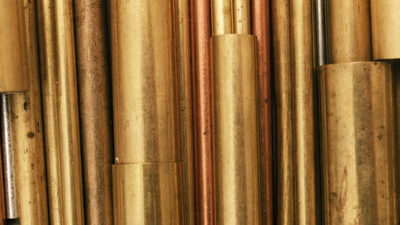
Brass, an alloy of copper and zinc, plays a pivotal role in the trade dynamics of West Asia and the Middle East. This region serves as a vital hub for commodity trade, connecting global markets with local supply chains. Brass, valued for its durability, corrosion resistance, and versatility in applications ranging from construction to electronics, has seen increasing demand across industries. Verified exporters and importers in the Middle East leverage advanced trade platforms to foster efficient trade networks, enabling seamless transactions for brass products. Marketing and trade of brass alloys in Middle Eastern markets are driven by strategic B2B marketplace platforms. These platforms facilitate product listings, trade advertising, and business networking, allowing buyers and sellers to explore global opportunities for brass and its applications. Regional insights on pricing, supply chain solutions, and market trends are crucial for stakeholders aiming to capitalize on this lucrative commodity. The broader metals market in West Asia—including steel, silver, copper, nickel, aluminum, zinc, gold, and platinum—also benefits from such platforms.
For instance, silver’s industrial uses and fluctuating prices are shaped by B2B marketplaces that streamline supply chains. Similarly, copper trade in Middle Eastern and West Asian markets is bolstered by verified networks, ensuring stable supply dynamics. Aritral, an AI-driven B2B platform, supports such international trade by offering tools like AI-powered marketing and global sales assistance, along with direct communication features. By simplifying trade processes, platforms like Aritral enable stakeholders to navigate the complexities of commodity trade and unlock new opportunities in metals markets.
-
Copper Trade Trends in Middle East & West Asia
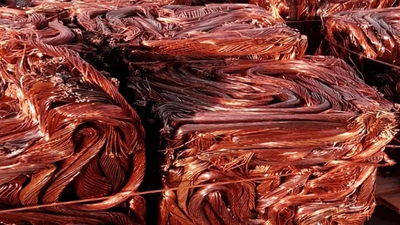
Copper, one of the most versatile metals, is essential for industries ranging from construction to electronics. The Middle East and West Asia have emerged as critical hubs for copper trade, driven by rising industrial demand and the region"s strategic location as a transit point between Asia, Europe, and Africa. The West Asia Copper Exchange plays a pivotal role in facilitating trade, providing market insights, and connecting verified exporters and importers. As copper prices fluctuate due to global economic shifts, regional B2B marketplaces and trade advertising platforms help businesses navigate complex supply chains and capitalize on opportunities. Copper"s uses are diverse, including electrical wiring, plumbing, and industrial machinery, making it indispensable in modern economies. In addition, recycling copper offers environmental benefits and supports sustainability. Methods such as smelting and electro-refining are used to create copper ingots, which are foundational for manufacturing processes. Copper alloys like brass and bronze further expand its applications in industries like decoration and automotive manufacturing.
Market dynamics in West Asia show increasing demand for copper, correlating with urbanization and industrial growth. Verified exporters on B2B platforms provide reliable supply chain solutions, ensuring consistency in regional product listings. This ecosystem also supports trade in other metals such as steel, silver, aluminum, and zinc, each playing a unique role in the commodity trade landscape. Copper, however, remains a cornerstone, influencing pricing dynamics and fostering economic growth across the Middle East. Aritral, an AI-driven B2B platform, contributes to this thriving industry by simplifying copper trade through product listings, direct communication, and AI-powered marketing tools. By connecting regional stakeholders, Aritral aids in navigating market complexities, ensuring smooth transactions, and unlocking new business opportunities.
-
Exploring the Gold Market and Trade Dynamics in the Middle East
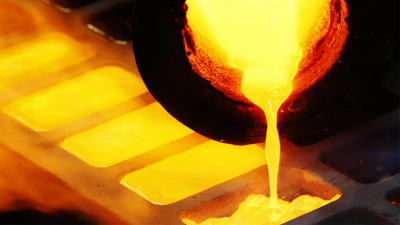
The gold market in the Middle East and West Asia is a cornerstone of the global metals trade, deeply rooted in the region"s history and culture. Gold"s discovery in West Asia dates back thousands of years, and today, the Middle East remains a thriving hub for gold mining, trading, and jewelry manufacturing. Verified exporters and importers leverage regional trade platforms to facilitate the flow of gold, ensuring transparency and reliability in supply chains. In recent years, B2B marketplaces in Asia have emerged as pivotal players, offering regional product listings and connecting Middle Eastern gold traders with global buyers. These platforms provide market insights, helping businesses navigate fluctuating prices influenced by currency stability, geopolitical factors, and demand in industries like jewelry, electronics, and investments. For instance, the price of gold is closely tied to global economic conditions and is expected to remain volatile in the coming year. Gold"s applications in the region extend beyond jewelry, including its use in electronics and as a financial asset. Jewelry manufacturing wages in the Middle East vary significantly, influenced by craftsmanship and market demand.
Buyers are advised to distinguish between new and second-hand gold jewelry by examining hallmarks and wear patterns. Middle Eastern traders emphasize transparency and quality assurance, making the region a premier destination for gold transactions. Aritral, an AI-driven B2B platform, supports the gold and metals market by simplifying trade processes. Through verified profiles, AI-powered marketing, and direct communication tools, Aritral helps connect regional stakeholders with global opportunities, enhancing supply chain efficiency for commodities like gold, silver, and other metals. "
-
Nickel Trade and Market Insights in Middle East & West Asia
Nickel, a vital industrial and strategic metal, plays a significant role in global commodity trade, particularly across the Middle East and West Asia. Known for its corrosion resistance and high melting point, nickel is essential in stainless steel production, battery technology, and various alloys such as brass. In West Asia, nickel trade dynamics are shaped by regional demand in infrastructure, automotive, renewable energy, and electronics industries. Verified exporters and importers leverage platforms like Aritral to explore opportunities, streamline supply chains, and analyze market trends. The Middle East"s B2B marketplace fosters connections among nickel suppliers and buyers, facilitating trade advertising and networking. Nickel"s industrial importance aligns with broader metals trade, including steel, copper, aluminum, and zinc. Supply chain solutions offered by these platforms connect regional businesses and enhance transparency in pricing, demand forecasting, and verified transactions. Nickel"s global significance is further underscored by its role in emerging technologies such as electric vehicle batteries, influencing trade agreements and regional market strategies.
Market insights reveal significant growth opportunities for nickel in the Middle East, particularly as urbanization and industrialization fuel demand for stainless steel and nickel-based alloys. Trade platforms are instrumental in connecting regional product listings, providing market insights, and facilitating connections between suppliers and buyers in the rapidly evolving commodities landscape. The integration of AI-driven tools, such as those offered by Aritral, simplifies global trade dynamics and promotes efficient communication and refined advertising strategies. In addition, nickel’s supply chain is impacted by trends in other metals like silver, copper, and gold, which share overlapping markets and applications. By exploring verified B2B networks, businesses can tap into regional nickel markets while addressing logistical challenges and identifying new growth avenues. Such platforms are reshaping trade dynamics in West Asia and the Middle East, paving the way for enhanced cooperation and sustainable practices in the metals industry. "
-
Exploring Platinum Trade Dynamics in Middle East & West Asia
Platinum, a critical component in industrial applications, is gaining increased attention across the Middle East and West Asia due to its unique properties and diverse uses. As a high-value metal, platinum is integral to automotive catalysts, jewelry, and electronic applications, making its trade dynamics pivotal in the region. The Middle East’s strategic location as a global trade hub enables seamless import and export activities, supported by emerging B2B marketplaces that connect verified buyers and sellers. These platforms are transforming the commodity trade landscape by streamlining transactions, enhancing transparency, and providing market insights. Platinum demand in West Asia is driven by industrial growth and increasing investments in high-tech sectors. Supply chain solutions offered by regional trade platforms enable businesses to navigate logistical challenges, ensuring timely delivery of this precious metal. Verified exporters and importers listed on these marketplaces further boost confidence in transactions, while detailed product listings provide vital insights into pricing trends and quality specifications. In addition to platinum, metals like steel, silver, copper, aluminum, and zinc also play critical roles in the region"s commodity trade.
For instance, copper’s role in electrical infrastructure and silver’s application in solar energy technologies highlight the growing emphasis on sustainability-driven markets. Meanwhile, the gold trade remains a cornerstone of the Middle Eastern economy, with B2B platforms facilitating connections between local suppliers and global buyers. Exploring the platinum market through such platforms unveils opportunities to tap into emerging trends, such as green technology and clean energy initiatives. Businesses leveraging these trade networks gain access to invaluable market insights, fostering growth and competitiveness. Aritral, an AI-powered B2B platform, simplifies international trade by offering services like product listing, marketing, and global sales assistance, making it a trusted partner in the region’s metals and commodities trade ecosystem. "
-
Exploring Silver Trade Dynamics in West Asia

Silver plays a pivotal role in the West Asian trade landscape, driven by its diverse industrial applications and cultural significance. As a key commodity in the Middle East"s robust import-export ecosystem, silver enjoys steady demand, bolstered by its uses in electronics, jewelry, and renewable energy technologies. Verified exporters and importers leverage B2B platforms to navigate the region"s silver market, ensuring transparency and efficiency in supply chains. The West Asian Silver Market is influenced by factors such as global economic trends, regional mining outputs, and fluctuations in demand for industrial uses, particularly in solar energy and electronics. Silver pricing in the Middle East is shaped by global market forces, currency valuations, and the availability of local mines. The region’s historical silver mines, while not as abundant as those in Latin America or Asia-Pacific, contribute to a steady supply chain and regional self-reliance. Trade platforms such as Aritral are instrumental in connecting verified buyers and sellers, showcasing regional product listings and facilitating market insights that support business networking. Furthermore, the Middle East"s silver trade is interconnected with other metals like gold, copper, and zinc, highlighting the region"s role as a hub for multi-metal trade.
Trends point toward growing demand for silver paste production, which has emerged as a key innovation in the region. Future supply and demand forecasts indicate an upward trajectory, driven by expanding industrial applications and the rising prominence of B2B marketplaces that streamline trade operations. The strategic integration of silver into West Asia’s commodity trade underscores its importance as a tradable asset. Platforms like Aritral ensure seamless transactions and deliver AI-powered market insights, fostering confidence in a dynamic trade environment.
-
Steel and Metals Trade Dynamics in Middle East and West Asia

Steel and metals like copper, aluminum, silver, and zinc represent the backbone of industrialization and economic growth across the globe, with the Middle East and West Asia emerging as critical regional hubs for these industries. Steel, in particular, is indispensable to infrastructure development, automotive manufacturing, and construction industries. In West Asia, steel products like rebars, beams, channels, and galvanized wires are heavily traded, with prices influenced by factors such as market demand, raw material costs, and energy prices. Verified exporters and importers on B2B marketplaces ensure smoother trade of these commodities. The Asia Iron and Steel Market is a dynamic and evolving sector, supported by supply chain solutions and regional trade platforms that connect buyers and sellers. For example, girder and beam production factories in the Middle East are increasingly leveraging technology and trade advertising platforms to streamline operations and expand their reach. Hot-rolled sheets and cold-rolled sheets dominate demand due to their varied applications, while galvanized wires and steel corner profiles represent niche yet vital segments. Beyond steel, metals such as silver, zinc, gold, and copper hold immense potential in West Asia’s trade economy.
Silver’s price is affected by global supply and demand trends, with its applications ranging from electronics to jewelry. Zinc, abundant in the earth"s crust, remains integral to industrial applications like galvanization and biological processes. Gold continues to be a cornerstone of the Middle Eastern economy, with traders focusing on its price volatility and investment opportunities. Copper and aluminum markets are also pivotal, with aluminum shaping supply chains due to its lightweight and versatile properties. Platforms like Aritral simplify international trade by offering AI-driven tools for product listing, direct communication, and market insights. These innovations empower businesses to navigate complexities in the Middle East’s commodity trade landscape efficiently, making it easier to connect with verified suppliers and optimize trade networks. "
-
Zinc Trade Insights in West Asia & Middle East Metals Market
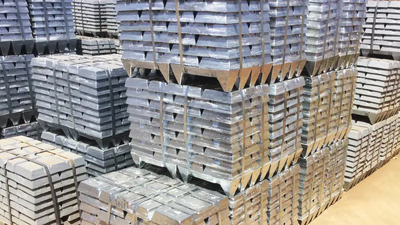
Zinc plays a pivotal role in the industrial and trade ecosystem of West Asia and the Middle East. As one of the most versatile metals, it is abundant in the earth"s crust, with significant applications ranging from galvanization in steel to manufacturing alloys like brass and nickel. The Middle East and West Asia are key players in the zinc market, supported by robust supply chain networks and verified exporters facilitating regional and international trade. Zinc ingots, categorized under HS codes such as 790111 and 790120, are highly sought after due to their durability and corrosion resistance. Leading manufacturers in West Asia are recognized for producing high-quality zinc ingots, with some of the most modern facilities located in the UAE and Saudi Arabia. Demand for zinc is driven by construction, automotive, and health industries, where it is used in galvanizing steel, producing batteries, and serving as an essential trace element for human health. B2B marketplaces in Asia, such as Aritral, enable seamless communication between buyers and suppliers and provide real-time market insights, fostering transparency in commodity trade. Verified exporters and detailed product listings ensure that businesses can confidently explore zinc ingot sourcing options and evaluate pricing trends.
In the broader metals market, zinc competes with copper, aluminum, and silver, each finding unique niches in Middle Eastern supply chains. Trade platforms influence these dynamics by offering market insights and connecting regional manufacturers to global buyers. Looking ahead, the zinc industry in West Asia is expected to grow due to increased demand for sustainable and durable materials, with prices forecasted to remain stable amidst fluctuating energy costs. For buyers, understanding market trends and leveraging B2B trade platforms is crucial in navigating this competitive landscape effectively. "
-
What is Aluminum slab and its use?
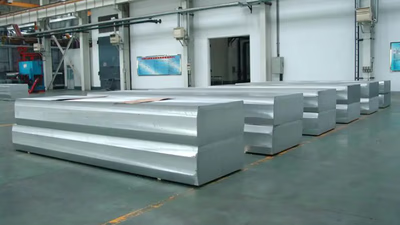
Aluminum slabs are thick, rectangular blocks produced through casting, serving as essential input for rolling mills. These slabs are rolled into thinner sheets or coils for various industries, including construction, automotive, and packaging. Their properties, such as lightweight and corrosion resistance, make them versatile for tooling applications and structural components. In the Middle East, aluminum slabs play a crucial role in steel production, particularly in manufacturing billets and slabs used in various steel products. The production process often involves electric furnaces, especially in Iran. Aluminum slabs are also integral to creating heat exchangers and can be further processed into extrusion billets for complex profiles used in architectural applications. The adherence to international standards ensures high quality and marketability of these products globally.
-
What are the characteristics of aluminum?
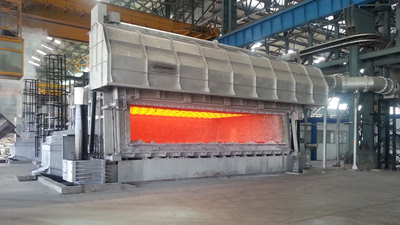
Aluminum features a face-centered cubic crystalline structure, providing strength and stability through metallic bonds. Its lightweight nature, combined with high strength, makes it comparable to steel in certain alloys. Aluminum"s natural oxide layer forms upon exposure to air, offering excellent corrosion resistance and self-repair capabilities. The metal is highly ductile and malleable, allowing for various manufacturing processes such as rolling and shaping into sheets or complex structures. Additionally, aluminum exhibits superior thermal and electrical conductivity, making it ideal for applications in heat exchangers and electrical wiring. Its recyclability is a significant advantage, requiring less energy than primary production while maintaining its properties. Overall, aluminum"s unique characteristics make it a versatile material in numerous industries.
-
What is aluminum wire and where is it used?
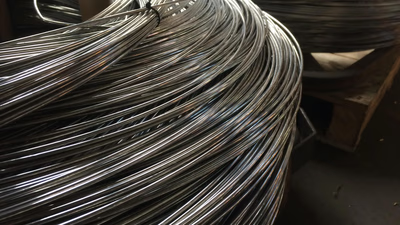
Aluminum wire serves as a cost-effective alternative to copper wire, primarily due to its lower production costs and abundance. Its lightweight nature simplifies handling and installation, making it ideal for large-scale electrical projects like power transmission lines. Aluminum wire is widely utilized in overhead power transmission and distribution systems, aerospace applications, and industrial settings. Despite having approximately 61% of copper"s conductivity, aluminum wire remains a reliable choice for various electrical applications when installed according to safety standards. The material"s thermal conductivity allows for efficient heat dissipation, while its availability from numerous suppliers ensures consistent access for projects. However, the use of aluminum wire in residential wiring has declined due to concerns about thermal expansion and connection reliability. Local electrical codes may impose specific requirements on aluminum wire usage, necessitating consultation with professionals for safe installations. Overall, aluminum wire"s advantages include cost-effectiveness, lightweight properties, and compatibility with other aluminum components in electrical systems. "
-
What is aluminum foil and what are its features and uses?
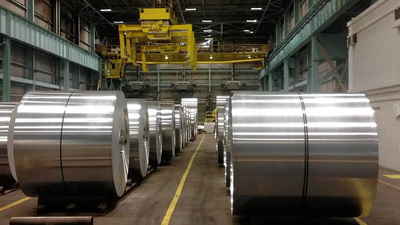
Aluminum foil is a versatile, thin sheet made from aluminum metal, known for its excellent barrier properties against moisture, light, and oxygen. This makes it ideal for preserving food freshness and quality. Its good thermal conductivity allows for even heat distribution in cooking and baking applications. The malleability of aluminum foil enables it to be easily shaped and wrapped around various objects, making it convenient for packaging and sealing. Additionally, its lightweight nature contributes to fuel efficiency during transport. Aluminum foil is also highly reflective, enhancing thermal insulation in construction and HVAC systems. Beyond food-related uses, it finds applications in electronics for shielding against electromagnetic interference and in the medical field for packaging pharmaceuticals. The production process involves refining aluminum ore into alumina before converting it into pure metal through the Hall-Heroult Process.
Notably, aluminum is 100% recyclable without losing its properties, saving significant energy compared to primary production methods. Aluminum foil"s diverse applications span from household projects to industrial uses in aerospace and construction. "
-
What is aluminum?
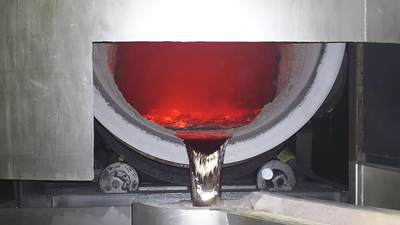
Aluminum is a lightweight, silvery-grey metal with the atomic number 13, known for its high strength and corrosion resistance. It is the most abundant metallic element in Earth"s crust, primarily extracted from bauxite ore. The extraction process involves refining bauxite to obtain alumina, which is then reduced electrolytically to produce aluminum metal. Aluminum"s low density makes it ideal for various applications across multiple industries, including transportation, construction, and packaging. Its excellent conductivity and recyclability further enhance its appeal as a sustainable material. Aluminum can be alloyed with other elements to improve specific properties such as strength and heat resistance, making it crucial in engineering applications like aircraft and rockets. Additionally, aluminum"s natural oxide layer provides protection against corrosion, allowing it to perform well in harsh environments. Its versatility extends to consumer products and electrical wiring, solidifying its status as one of the most important engineering materials today. "
-
Are the effects of aluminum harmful to health?
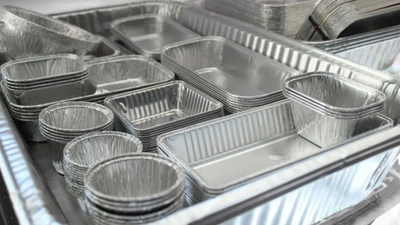
Aluminum is a naturally occurring element and is not classified as toxic like lead or mercury. It is the third most abundant element in the Earth"s crust, and humans are exposed to small amounts through food, water, air, and medications. Regulatory bodies like the WHO and FDA have set guidelines for safe aluminum exposure. While small quantities are generally safe, excessive exposure can lead to health issues, particularly in occupational settings where airborne aluminum dust is prevalent. Prolonged exposure may result in respiratory problems and other health concerns. There are ongoing debates regarding aluminum"s potential link to neurological disorders such as Alzheimer"s disease; however, current research does not support a direct connection between everyday aluminum exposure and these conditions. Individuals with impaired kidney function may be at higher risk for aluminum accumulation, necessitating caution regarding exposure levels. Overall, while aluminum can pose risks at high concentrations or prolonged exposure, everyday contact through common sources is typically considered safe for most individuals. "
-
What are aluminum ingots, types, price and applications?
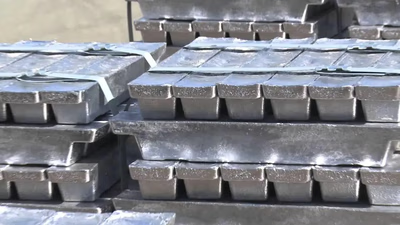
Aluminum prices are influenced by supply and demand, production costs, and global economic conditions. Factors such as mining availability, recycling, and geopolitical events can disrupt supply and lead to price fluctuations. Aluminum ingots, typically rectangular or cylindrical, serve as raw materials for various industries including automotive, aerospace, and construction. They can be alloyed with elements like copper or magnesium to enhance properties such as strength and corrosion resistance. The recycling of aluminum is energy-efficient, requiring only 5% of the energy needed for primary production. Different types of aluminum ingots include bullion (50-pound and 1000-pound), slabs, T-bar ingots, and billets, each serving specific industrial applications. The price of aluminum is also affected by market conditions, exchange rates, and the purity of the alloys used. As of recent data, aluminum is priced at $2,614. 67 per tonne.
-
What are different types of aluminum products?
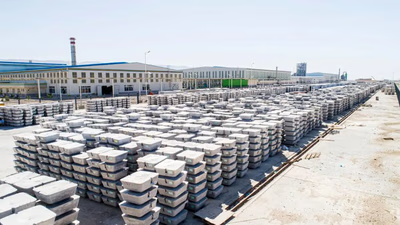
Aluminum products are diverse and widely used across various industries. Aluminum sheets and plates serve as flat, thin forms ideal for construction, automotive, and packaging applications due to their versatility. Aluminum extrusions, created by forcing molten aluminum through a die, allow for complex shapes used in window frames and furniture. Solid aluminum bars and rods provide strength for structural support in construction and manufacturing. Engineered aluminum profiles are designed for specific applications like modular structures and display systems, offering ease of assembly. Other forms include aluminum tubes and pipes for plumbing and HVAC systems, aluminum foil for packaging and insulation, and aluminum castings for intricate designs in automotive and aerospace sectors. Each type of aluminum product has unique properties that cater to different functional requirements, making them essential in modern manufacturing.
-
Ribbed aluminum foil and its applications
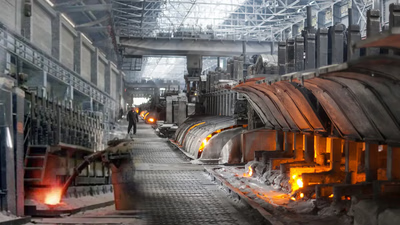
Ribbed aluminum foil, also known as embossed aluminum foil, features a textured surface created through a specialized rolling process. This unique pattern enhances heat transfer capabilities, making it ideal for applications in heat exchangers and thermal insulation. The raised ribs also facilitate moisture management, which is beneficial for packaging perishable goods and controlling condensation in industrial processes. Additionally, ribbed aluminum foil serves as an effective sound and vibration dampening material, commonly used in automotive interiors and acoustic panels. Its anti-friction properties reduce wear in sliding mechanisms and machinery. The thickness of ribbed aluminum sheets ranges from 1. 5 to 10 mm, allowing them to be easily shaped for various uses. Applications extend to construction elements like guardrails and flooring, as well as decorative purposes in crafts and packaging.
The textured surface provides improved grip, making it suitable for non-slip applications in food service and automotive sectors. Overall, ribbed aluminum foil is versatile with numerous industrial and creative uses.
-
What are the uses of aluminum?
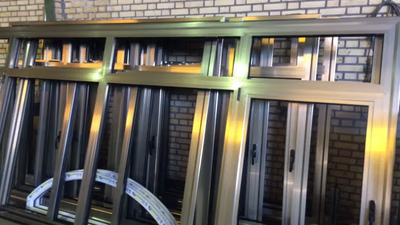
Aluminum is a versatile material widely used across various industries due to its lightweight, strength, and corrosion resistance. In the automotive sector, it enhances fuel efficiency and performance by reducing vehicle weight. The aerospace industry relies on aluminum for aircraft structures, while trains and ships utilize it to improve energy efficiency. In construction, aluminum is favored for its durability in buildings, bridges, and other structures. Its applications extend to electrical wiring due to high conductivity and in consumer goods like cans and kitchen utensils. Aluminum"s role in heat exchangers and electrical components further underscores its importance in HVAC systems and power transmission. The material"s recyclability also contributes to its demand in packaging and insulation. Overall, aluminum"s unique properties make it essential for modern manufacturing processes across multiple sectors. "
-
What is the basis for naming aluminum alloys? How to understand the names of Aluminum?
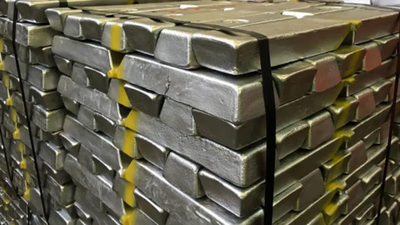
The naming of aluminum alloys is based on their alloying elements, proportions, and specific characteristics. Aluminum alloys are categorized into series, each defined by a primary alloying element. For instance, Series 1xxx consists of nearly pure aluminum, while Series 2xxx features copper as the main element. Each series is assigned a numeric designation that provides further details about the alloy"s composition and properties. Additional suffixes may indicate specific treatments or characteristics, such as strain-hardening or annealing processes. The ANSI and AA naming systems standardize these designations, ensuring clarity in communication among engineers and manufacturers. Understanding these naming conventions is crucial for selecting the appropriate alloy for various applications in industries such as construction, automotive, and aerospace. This knowledge aids in identifying the right materials for specific requirements and promotes effective supply chain solutions within the Middle East trade platform. "
-
What are the factors influencing the price of aluminum ingots?
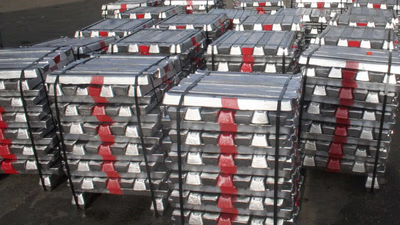
Aluminum ingot prices are primarily influenced by the balance of supply and demand, which is affected by economic growth, industrial production, and global consumption patterns. During economic upturns, demand for aluminum rises in sectors like construction and automotive, leading to higher prices. Conversely, economic downturns can reduce demand and lower prices. The cost of raw materials, particularly bauxite and energy prices, also plays a crucial role in determining ingot prices. Energy costs are significant due to the energy-intensive nature of aluminum smelting. Additionally, factors such as the size and dimensions of ingots, alloy types, thickness, final weight, and currency exchange rates further influence pricing. Trade policies including tariffs and import/export restrictions can disrupt supply chains and affect market dynamics. Market speculation also introduces volatility in short-term price fluctuations. Understanding these factors is essential for stakeholders in the aluminum industry to navigate pricing strategies effectively.








































